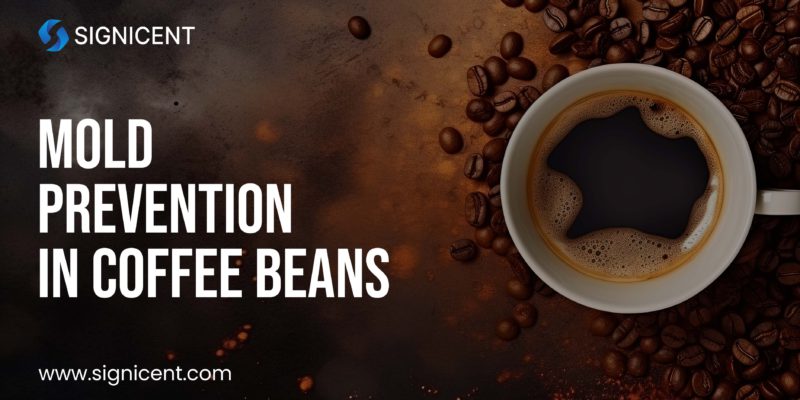In the competitive world of coffee production, coffee is the second most traded commodity globally, after crude oil. Over 2.25 billion cups are consumed every day worldwide. But preventing mold on coffee beans is a crucial priority for farmers and suppliers. Mold not only affects the taste and quality of beans but also poses health risks. This blog explores effective strategies to prevent mold on coffee beans, from improved harvesting and drying techniques to innovative storage solutions. Learn how proactive measures can protect coffee crops, preserve product quality, and uphold market competitiveness. Join us as we explore the complexities of mold control in the coffee business and find practical methods to protect every bean.
Challenges:
- Variations in temperature and humidity can create ideal conditions for mold growth, making it challenging to control mold development consistently.
- Improper harvesting techniques, such as leaving coffee cherries on the tree for too long or using unclean harvesting equipment, can increase the risk of mold contamination.
- Inadequate drying methods or facilities can lead to uneven drying and moisture retention in coffee beans, providing a breeding ground for mold spores.
- Poor storage conditions, including inadequate ventilation, improper humidity levels, and exposure to sunlight, can contribute to mold growth during storage and transportation.
- Coffee plants are susceptible to various fungal diseases, such as coffee leaf rust and coffee berry disease, which can compromise the quality of beans and increase susceptibility to mold.
- Pest Infestations: Insects and rodents can damage coffee cherries, creating entry points for mold spores and facilitating mold growth during processing and storage.
Each year Signicent provides consultancy to hundreds of organizations to help transform their innovations to value.
Innovative solutions:
- Developing nano-coatings or films embedded with antimicrobial agents to coat storage containers or packaging materials.
- These coatings inhibit the growth of mold and other pathogens, extending the shelf life of coffee beans and reducing the risk of contamination.
- Using IoT sensors in coffee farms and storage to monitor temperature, humidity, and moisture levels in real-time, provides data for proactive mold prevention.
- Using drones equipped with thermal imaging and multispectral cameras to conduct aerial surveys of coffee plantations.
- These drones can identify areas of concern, such as moisture buildup or fungal infections, allowing farmers to target interventions more precisely.
- Utilizing UV light technology to sanitize coffee beans and equipment, effectively killing mold spores and preventing contamination.
Market research:
According to Signicent’s Market Intelligence, the global market for mold prevention on coffee beans market is likely to reach values in the ranges shown below.

Key players:
Some of the coffee manufacturers in this field:
About Signicent LLP
We assist businesses globally in their technology innovations, R&D, new product development, patents, valuation, product commercialization & market research needs.
Services Offered:
- Technology Intelligence
- Market Research
- Patent Landscape
- Technology gap analysis
- Design Patent Search
- Portfolio Analysis
- Freedom to operate
- Bio Sequence Search
- Innovation pipeline identification
- Chemical Structure Search
- Patent Invalidity Search
- Manufacturers Search/ Supplier search
- Patent Licensing Services
Elevate your Innovation and Research with Signicent’s cutting edge approach to assist you with Technology and Market related matters alongside the IP aspect of the analysis.
